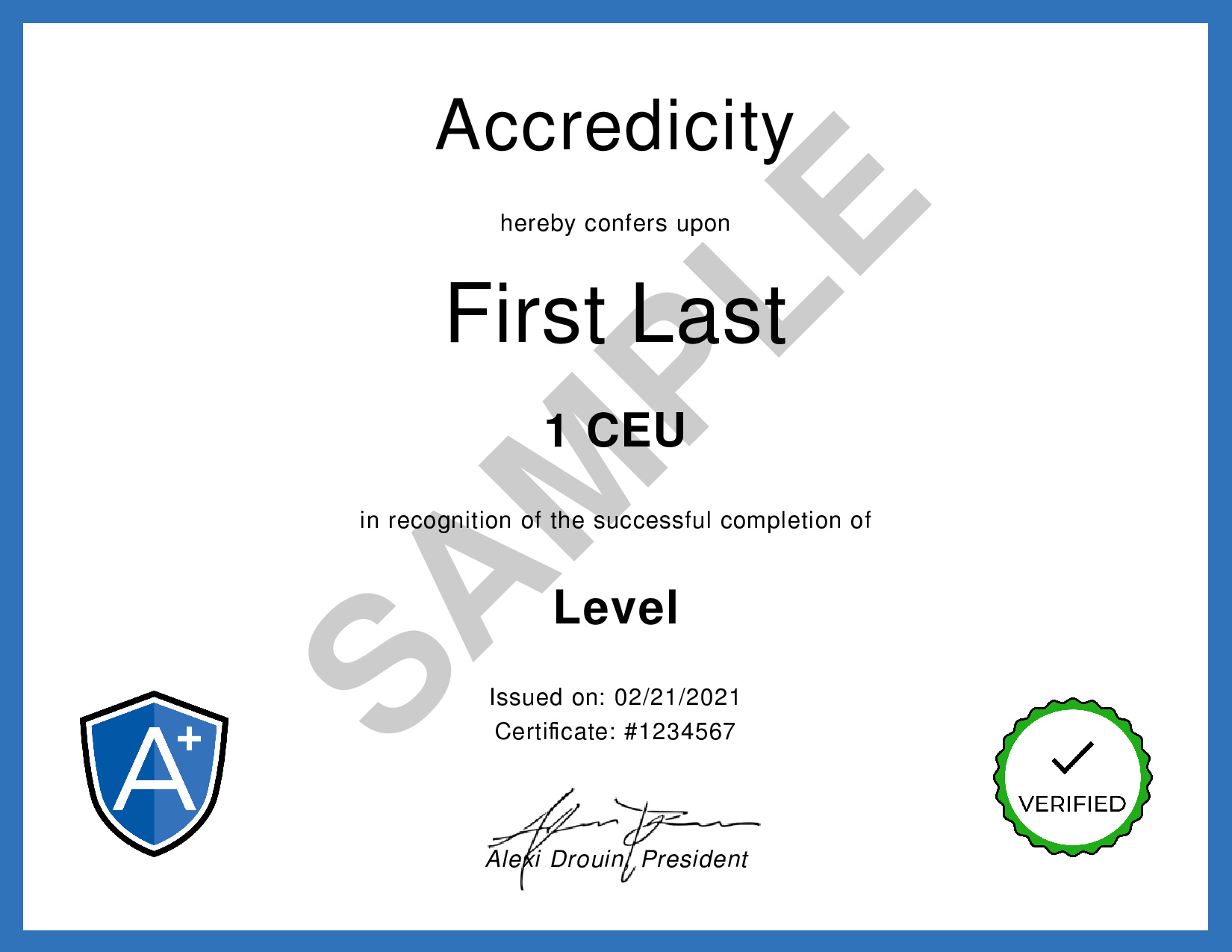Triggers: Employee Engagement | Marshall Goldsmith
Reference: Marshall Goldsmith. (2021, January 27). Triggers: Employee Engagement [Video]. YouTube.
We Make Your Education Count

Get the Credit You Deserve and Become the Most Attractive Job Candidate by Earning and Posting A+ Badges to Your Linkedin Profile.
Sign Up to Get Started at Accredicity
|
Unlock the power of self-engagement: Discover how to take control of your workplace experience with this must-watch video. Marshall Goldsmith, a fellow at the National Academy of Human Resources, presented a compelling argument about Employee Engagement. He noted that despite efforts to create recognition, reward programs, training, and empowerment, global employee engagement is near an all-time low. He suggested that companies and employees need to take an active role in engagement, rather than waiting for the company to do it all. Goldsmith's research found that when employees asked themselves active questions like "Did I do my best to set clear goals?" and "Did I do my best to be happy?" they saw a 34% increase in overall engagement. This suggests that employees should take the initiative to increase their engagement, and companies should support them in this effort. Learning Outline1. Recognize the importance of employees taking responsibility for their own engagement. Instructional ContentEmployee engagement is an important topic for businesses and organizations, and one that has been discussed for decades. It’s clear from the video that the traditional approach to engagement is focused on passive questions: what can the company do to engage employees? However, this does not address the other half of the equation - what can employees do to engage themselves? John F. Kennedy’s famous speech about the responsibility of citizens to their country serves as the perfect analogy for employee engagement. It is the employee’s responsibility to take ownership of their own engagement. Dr. Kelly Goldsmith, professor at Vanderbilt University, has conducted research on this concept and identified six active questions that employees should ask themselves regularly to assess their own engagement. These questions focus on the individual’s responsibility to set clear goals, make progress, find meaning, be happy, build relationships, and be fully engaged. The research Dr. Goldsmith conducted revealed that two weeks after asking themselves the six questions, 34 percent of employees said they were feeling happier, more engaged, and that they were improving in all six areas. 67 percent reported improvement in four of the six areas, and only nine percent reported no change. This video demonstrates the importance of recognizing that employee engagement is a two-way street. Companies must do their part to create a positive work environment, but it is also the responsibility of employees to take ownership of their own engagement. By asking themselves the six active questions posed by Dr. Goldsmith, employees can take a proactive approach to their own engagement and create a more positive work experience. Management
|

Employee engagement is important for everyone to be productive and happy in their work. But it turns out that despite all the efforts that companies make to engage employees, they still have low engagement levels. So, why is this? It turns out that companies have been mainly focusing on what they can do to engage you, but not enough on what you can do to engage yourself. It's like the airline attendants: they have the same pay and uniform, but one is positive and the other is negative. That’s because one is doing their best to be engaged, while the other is not. So, the lesson is that if you want to be engaged, you have to do your best to be engaged. That way, you can be happy, productive and have a great work experience. Video Quotes"Ask not what your country can do for you, ask what you can do for your country" -John F. Kennedy Related Quotes"We can really make a difference in our business if we create an environment where people want to come to work and make an impact." -Jimmy Williams, Senior Vice President, Human Resources of Kimberly-Clark "Engagement is all about creating an environment where people feel like they can contribute and make a difference." -Kerryann Walsh, Employee Engagement Expert "At the end of the day, if employees are engaged, they will be more productive, they will be more creative, they will work harder, they will stay longer, and they will be more successful." -Anurag Sharma, Chief Culture Officer at Booz Allen Hamilton Competencies1. Company Culture Learning Outcomes1. Analyze the importance of employee responsibility for their own engagement. Sample Answers1. From this video, I learned that employee engagement is not just something companies can do to motivate their employees, but that employee responsibility is also a factor. Employees can increase their own engagement by asking themselves active questions such as "did I do my best to set clear goals?” and “did I do my best to find meaning?" 2. I also learned that in order to increase employee engagement, employees must have a sense of responsibility to do their best in their workplace and find meaning in their work. Asking themselves active questions can help employees to become more engaged in their work. 3. The research presented in the video was particularly interesting to me, as it showed that when employees asked themselves active questions over a two-week period, 34% of them felt happier and more engaged, and 91% of them got better at least one of the questions. This reinforced the importance of taking personal responsibility for one’s own engagement. Marshall GoldsmithMarshall Goldsmith is an executive coach and the world’s most respected authority in helping successful leaders achieve positive, lasting change in behavior for themselves, their people, and their teams. He has written over 35 books, including the New York Times bestseller Triggers and the international bestsellers Mojo and What Got You Here Won’t Get You There. He is also the co-founder of Marshall Goldsmith Group and the founder of Marshall Goldsmith Stakeholder Centered Coaching™. He is associated with the Marshall Goldsmith Group Marshall Goldsmith. Learning DesignCompany culture is a set of values and principles that guide how an organization functions. Stakeholder management is the process of managing relationships with key stakeholders in an organization. Motivation is an important component of management. Motivated employees are more productive, engaged, and have greater job satisfaction. AssessmentQ: Based on the video, which of the following best describes the concept of employee engagement? A. The company’s responsibility to engage its employees Answer: B. The employee’s responsibility to engage themselves. QuestionsCommon Hypothetical Questions: Real-Life Application Questions: KeywordsEmployee Engagement, Meaningful Work, Clear Goals, Positive Relationships, Fully Engaged, Make Progress Facts1. Research shows that actively engaging in work can lead to higher employee engagement. Trends1. Create an employee engagement challenge program that rewards employees for completing certain milestones with rewards such as extra vacation days, bonus pay, or recognition. 2. Develop an employee recognition program that rewards those who have gone above and beyond in their work, such as reaching a certain production goal or going the extra mile for a customer. 3. Organize a company-wide "Employee Engagement Day" where employees can take part in team-building activities and be recognized for their efforts. SourceThis learning instructional guidance was formulated using the GPT-3 language model created by OpenAI. Share#EmployeeEngagement is key to success. We must take responsibility for our own engagement by asking ourselves daily: "Did I do my best?" #motivation #goals #selfimprovement 💪 @Accredicity |








 9 Creds - Management
9 Creds - Management



